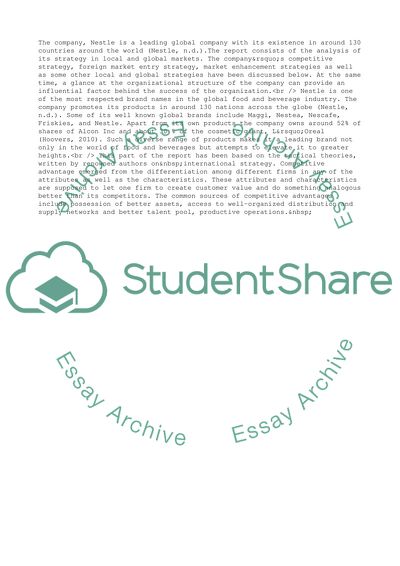Cite this document
(Nestle a Leading Global Company Term Paper Example | Topics and Well Written Essays - 3588 words, n.d.)
Nestle a Leading Global Company Term Paper Example | Topics and Well Written Essays - 3588 words. Retrieved from https://studentshare.org/management/1562562-international-bus-management
Nestle a Leading Global Company Term Paper Example | Topics and Well Written Essays - 3588 words. Retrieved from https://studentshare.org/management/1562562-international-bus-management
(Nestle a Leading Global Company Term Paper Example | Topics and Well Written Essays - 3588 Words)
Nestle a Leading Global Company Term Paper Example | Topics and Well Written Essays - 3588 Words. https://studentshare.org/management/1562562-international-bus-management.
Nestle a Leading Global Company Term Paper Example | Topics and Well Written Essays - 3588 Words. https://studentshare.org/management/1562562-international-bus-management.
“Nestle a Leading Global Company Term Paper Example | Topics and Well Written Essays - 3588 Words”, n.d. https://studentshare.org/management/1562562-international-bus-management.


